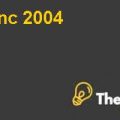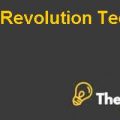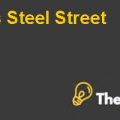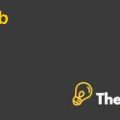Radio One Inc Case Study Solution
There are a number of risks to which Radio One would be exposed to as a result of this transaction. However, the management of the company could take certain steps to mitigate those risks. The major risks and the mitigation strategies for the company are described below:
Cannibalization
One of the most important and the most significant risk facing the company is the risk of cannibalization. Cannibalization could occur as a result of the own audience of Radio One. The radio format and the target group are similar for the new 12 stations that the company has decided to acquire. However, the management of the company could make efforts to make their old stations special again and develop those stations. The product life cycle and the level of the satisfaction of the customers could be increased significantly by reducing the price of the services and making it more unique and reliable. Lastly, the management of the company could counter cannibalization by differentiating the level of the services of its current stations.
Business Culture
It might be possible that the business culture of all the target 12 urban radio stations does not match with the business culture of Radio One currently. The reason for this is that Clear Channel Communication is a much larger company in size and revenues as compared to Radio One and this means that there would be considerable differences regarding the philosophy and the culture of both the companies. Therefore, if this happens then the management of the company would not be able to materialize the synergies from the acquisition of the 12 urban radio stations. Hence, in order to mitigate this risk, after acquiring the new stations, its employees need to be trained on the job and off the job regarding the cultural norms of Radio One. Furthermore, they could be provided with manuals so resolve the problems when they encounter one.
Radio One Inc Harvard Case Solution & Analysis
Lack of Expertise
Radio One is about to acquire the radio stations of Clear Channel Communications and this would enhance the business scope of Radio One. However, the employees of Radio One have no expertise in the area of recording, internet and cable industry. Therefore, this might lead towards the failure of the acquisition which has been one of the major reasons for the past acquisition failures also. Therefore, in order to mitigate these risks the company could hire experts of these fields and train its employees. On the job training would be provided to its employees. The company could also retain all the current employees of Clear Channels Communication. The senior management will have to take steps to integrate these new core areas with the current operations of Radio One.
Impact on Credit Rating
FFC has asked Clear Channels Communications to divest some of its radio Stations and now Radio One wants to acquire these stations however; the management of Radio One needs to evaluate that whether there are any skeletons in the closet due to which the company is divesting these 12 stations. Furthermore, due to this risk and the risk with the acquisition of the 9 other radio stations, the credit rating of the company might be reduced and then the investors would have doubts over the creditworthiness of the company and the decrease in the credit rating would bound the company to pay high interest payments. Therefore, the management of the company could perform detailed due diligence and predicted valuations for the new stations and determine the synergies. Moreover, the management of Clear Channel Communications should also be enquired regarding their reasoning for divesting these radio stations.
QUESTION 2
In order to perform the discounted cash flow valuation for the 21 stations and determine the Radio One’s offer for these stations, a number of assumptions have been made for calculations. First of all, the ratio for the allocation of the corporate expenses and the depreciation and the amortization expenses has been estimated based on the growth in these expenses using information in exhibit 6 and exhibit 9. It has been assumed that the corporate expenses would be constant at about 30.75% and the depreciation and amortization expenses would also be constant at about 84%. The terminal growth rate after 2004 has been assumed to be 2% and 2% synergies have been assumed through building line items.
The risk free rate has been taken for the 30 year treasury yields of government bonds because the company has a long history. Furthermore, the market risk premium has been assumed to be 9% based on the large size of the company and its past success. The target debt to equity ratio consists of 20% debt and 80% equity and the corporate tax rate has been assumed to be around 35%.
Based on these, the equity beta for Radio One has been calculated to be around 0.7. Lastly, the credit rating of the company has been assumed to be A, therefore the cost of debt used is 7.35%. Based on this information, the weighted average cost of capital for the company has been calculated to be around 11%...............
This is just a sample partial case solution. Please place the order on the website to order your own originally done case solution.












